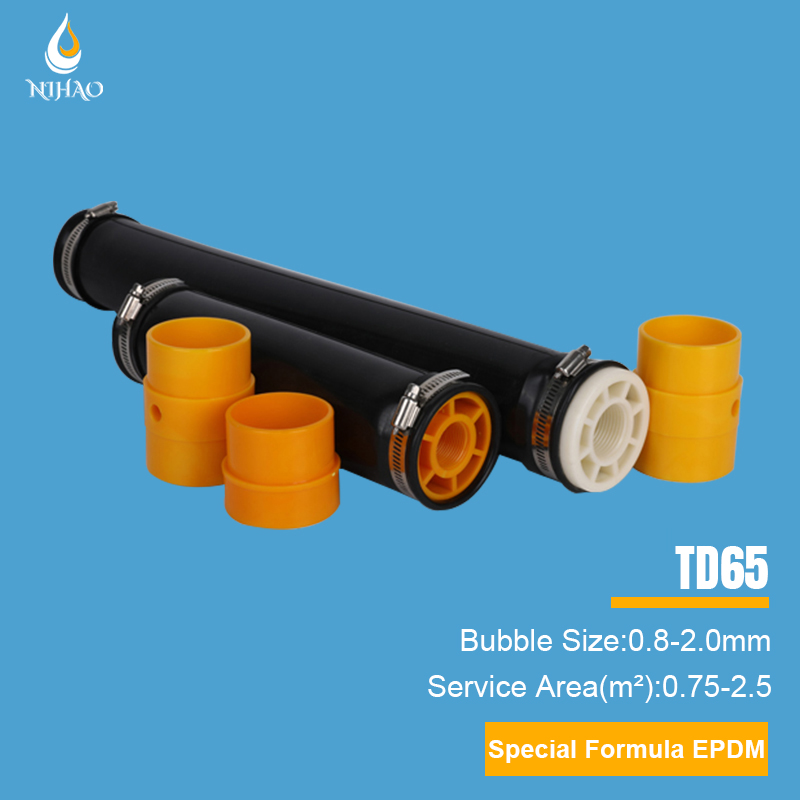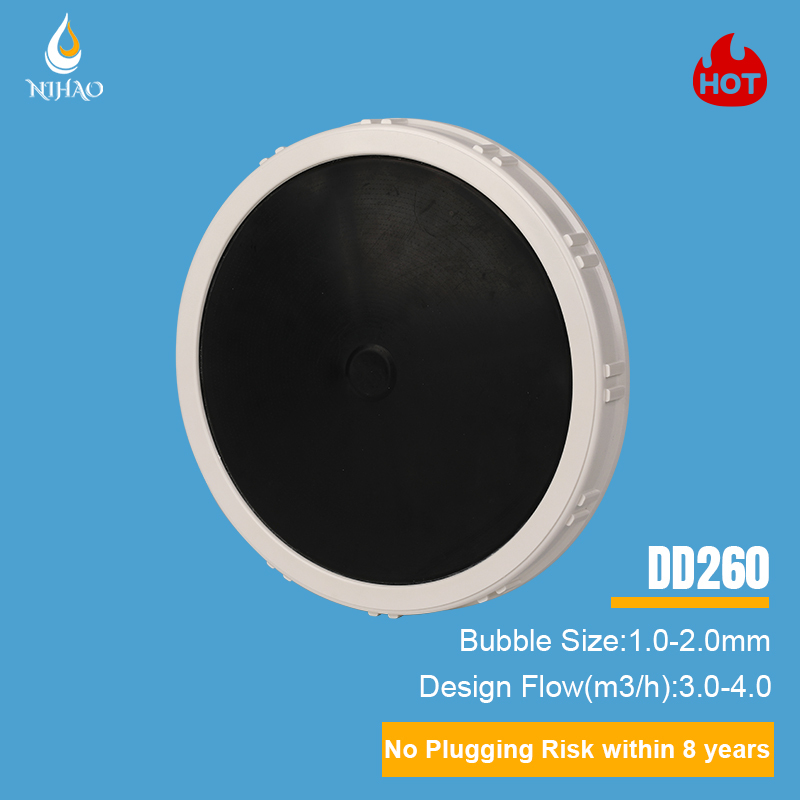 +86-15267462807
+86-15267462807
An EPDM membrane diffuser is a type of diffuser used in wastewater treatment plants and other applications where aeration is needed. EPDM stands for ethylene propylene diene monomer, which is a synthetic rubber material that is resistant to UV radiation, ozone, and other environmental factors.
The EPDM membrane diffuser consists of a thin, flexible membrane made of EPDM rubber that is perforated with tiny holes. The membrane is stretched over a plastic or metal frame and attached to an air supply line. When air is forced through the supply line, it diffuses through the tiny holes in the membrane, creating a fine mist of bubbles that rise to the surface of the water.
EPDM membrane diffusers are known for their durability and resistance to clogging, making them a popular choice in wastewater treatment applications. They also have a high oxygen transfer efficiency, which means they can effectively introduce oxygen into the water for biological treatment processes.
EPDM membrane air diffusers, whether tube or disc type, offer several advantages compared to other types of diffusers. Here are some of the advantages of EPDM membrane air diffusers:
High Oxygen Transfer Efficiency: EPDM membrane air diffusers have a high oxygen transfer efficiency, meaning they can effectively introduce oxygen into the water for biological treatment processes. This is due to the fine bubbles that are produced by the diffusers, which have a large surface area and stay in the water for a longer period of time, allowing more oxygen to be transferred.
Durability: EPDM membrane air diffusers are known for their durability and can last for several years with proper maintenance. The EPDM material is resistant to UV radiation, ozone, and other environmental factors, which ensures that the diffuser can withstand harsh conditions.
Resistance to Clogging: EPDM membrane air diffusers are less prone to clogging compared to other types of diffusers because the fine bubbles produced by the diffusers help to prevent sedimentation and accumulation of debris.
Easy to Install and Maintain: EPDM membrane air diffusers are easy to install and maintain, which makes them a popular choice in wastewater treatment plants and other applications. The diffusers can be easily cleaned and membranes or discs can be replaced when necessary.
Versatility: EPDM membrane air diffusers are suitable for a variety of applications, including wastewater treatment plants, aquaculture systems, and other applications where aeration is needed.
Cost: EPDM membrane air diffusers can be more expensive than other types of diffusers. However, their durability and high oxygen transfer efficiency can make them more cost-effective in the long run.
Air Pressure Requirements: EPDM membrane air diffusers may require higher air pressure to operate efficiently compared to other types of diffusers, especially tube diffusers. This may require the use of more powerful blowers or compressors, which can increase energy costs.
Replacement of Membranes or Discs: The EPDM membranes or discs used in the diffusers may need to be replaced periodically, which can add to maintenance costs.
Lower Oxygen Transfer Efficiency for Disc Diffusers: Compared to tube diffusers, EPDM membrane disc diffusers have lower oxygen transfer efficiency. This means that a larger number of discs may be needed to achieve the same level of oxygen transfer. While our disc diffuser has 15% increase in the holes density, 10% increase in Standard oxygen transfer Efficiency.
Clogging: While EPDM membrane air diffusers are less prone to clogging compared to other types of diffusers, they can still become clogged over time, especially if they are not cleaned and maintained properly.
Water Depth: Tube diffusers are more suitable for deep water applications because they produce finer bubbles that are better at diffusing oxygen at greater depths. Disc diffusers are more suitable for shallower water bodies.
Oxygen Transfer Efficiency: Tube diffusers generally have a higher oxygen transfer efficiency than disc diffusers. If high oxygen transfer efficiency is required, tube diffusers are a better option.
Air Supply Pressure: Tube diffusers require higher air supply pressure to operate efficiently compared to disc diffusers. If the available air supply pressure is limited, disc diffusers may be a better option.
Cost: Tube diffusers can be more expensive than disc diffusers, especially for deep water applications that require longer tubes. If cost is a major consideration, disc diffusers may be a more economical choice.
Maintenance: Both tube and disc diffusers require periodic cleaning and replacement of membranes or discs. However, tube diffusers are easier to clean because they have fewer components and can be cleaned by simply brushing or hosing them down. Disc diffusers require more detailed cleaning to remove any accumulated biofilm.